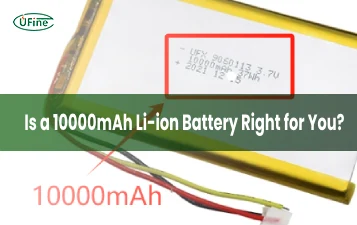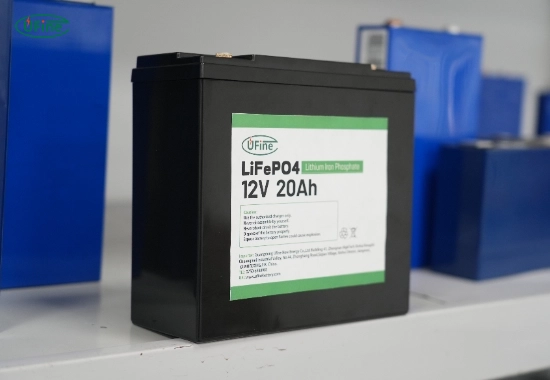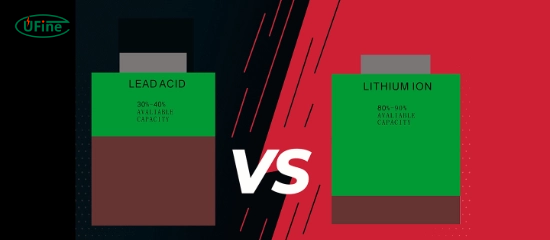Choosing the right lithium fish finder battery is essential for enhancing your fishing experience. These batteries provide reliable power, ensuring your fish finder operates smoothly throughout your fishing trips. With advancements in battery technology, lithium batteries have become the go-to choice for many anglers. In this article, we will delve into the various aspects of lithium fish finder batteries, exploring their advantages, types, and key factors to consider when selecting.
Part 1. What are lithium fish finder batteries?
Lithium fish finder batteries are specialized power sources designed for marine applications. They are made from lithium compounds, which offer several benefits over traditional battery types.
Key Features of Lithium Batteries:
- Long Lifespan: Lithium batteries can last up to ten times longer than lead-acid batteries, providing more value over time.
- Lightweight Design: These batteries are significantly lighter than their lead-acid counterparts, making them easier to transport and install on boats or kayaks.
- Fast Charging: Lithium batteries can charge up to four times faster than lead-acid batteries, allowing quick recharges during fishing trips.
- Deep Discharge Capability: They can be discharged to a lower percentage without damage, unlike lead-acid batteries that suffer from reduced lifespan if discharged below 50%.
Part 2. Why choose lithium over lead-acid batteries?
Choosing lithium and lead-acid batteries involves understanding their performance, lifespan, and efficiency differences. Here’s a detailed comparison:
Key Differences:
- Lifespan: With proper care, lithium batteries typically last 8 to 10 years, while lead-acid batteries usually last only 3 to 5 years.
- Weight: Lithium options are much lighter, often weighing up to 50% less than lead-acid batteries. This makes them easier to handle and install.
- Charge Time: Lithium batteries can be charged in just a few hours, while lead-acid batteries may take up to 12 hours or more.
- Discharge Depth: Lithium batteries can be safely discharged to 20%, whereas lead-acid should not be discharged below 50% to avoid damage.
Comparison Table
| Feature | Lithium Batteries | Lead-Acid Batteries |
|---|---|---|
| Lifespan | Up to 10 years | 3-5 years |
| Weight | Lighter (up to 50% less) | Heavier |
| Charge Time | Fast (up to 4x faster) | Slower (up to 12 hours) |
| Discharge Depth | Safe down to 20% | Not below 50% |
| Maintenance | Low maintenance | Requires regular maintenance |
Part 3. Types of lithium batteries suitable for fish finders
When selecting a lithium battery for your fish finder, it’s essential to understand the different types available and their specific characteristics:
- Lithium Iron Phosphate (LiFePO4): This type is known for its safety and thermal stability. LiFePO4 batteries are popular among fishermen due to their long life cycles and resistance to overheating. They offer consistent power output and are less likely to catch fire than other lithium types.
- Lithium Polymer (LiPo): These batteries are lightweight and flexible in shape, making them versatile for various applications. However, they require careful handling as they can be sensitive to overcharging and physical damage. LiPo batteries are great for applications where weight is a critical factor.
- Lithium Nickel Manganese Cobalt (NMC): NMC batteries balance performance and cost. They provide good energy density and are suitable for high-drain applications like fish finders. Their ability to deliver high currents makes them ideal for devices requiring power bursts.
Understanding these types helps you choose the right battery that fits your needs while ensuring optimal fishfinder performance.
Part 4. The benefits of using lithium batteries in fishing
Using lithium batteries in fishing offers numerous advantages:
- Enhanced Performance: With faster charging and longer usage times, anglers can focus more on fishing rather than worrying about power levels.
- Environmental Impact: Lithium batteries have a lower ecological footprint than traditional lead-acid options due to their longer life cycles and recyclability.
- Cost Efficiency: Although initially more expensive, their longevity translates into lower costs over time as they require fewer replacements.
Part 5. Key factors to consider when selecting a lithium battery
When choosing a lithium battery for your fish finder, several factors should influence your decision:
- Capacity: Measured in amp-hours (Ah), capacity indicates how long the battery can power your device. A higher capacity means longer usage time between charges.
- Weight: Consider the battery’s weight, especially if you plan on transporting it frequently. Lighter options are generally more convenient.
- Size: Ensure the battery fits well within your boat or kayak setup without compromising space or accessibility.
- Compatibility: Verify that the battery is compatible with your specific fish finder model to avoid operational issues.
- Cost: Lithium batteries may have a higher upfront cost, but their longevity and performance often justify the investment over time.
Part 6. How do you maintain your lithium fish finder battery?
Proper maintenance is essential for maximizing the lifespan of your lithium battery. Here are some tips:
- Regular Charging: Avoid letting the battery discharge completely; recharge it when it reaches around 20%. This practice helps maintain its health.
- Temperature Control: Store and operate your battery within recommended temperature ranges (usually between -4°F and 140°F) to prevent extreme heat or cold damage.
- Clean Connections: To ensure optimal conductivity, keep terminals clean and corrosion-free. Regularly check connections for signs of wear or damage.
- Monitor Performance: If available, regularly check the battery’s performance indicators, which can help identify potential issues early on.
Part 7. Where can you purchase high-quality lithium fish finder batteries?
Finding reliable retailers is crucial when purchasing a lithium fish finder battery:
- Specialized Marine Stores: Many local marine supply shops offer quality lithium options tailored for fishing applications.
- Online Retailers: Websites like Amazon or dedicated battery suppliers often offer extensive selections and customer reviews to help inform your purchase.
- Manufacturer Websites: Buying directly from manufacturers can ensure you receive genuine products and warranties or guarantees. For instance, Uifne Battery offers OEM and ODM services, providing customized solutions that cater specifically to your needs as an angler.
Part 8. FAQs
-
What is the average lifespan of a lithium fish finder battery?
Lithium fish finder batteries typically last 8 to 10 years with proper care and usage. -
Can I use a lithium battery with any fish finder?
Most modern fish finders are compatible with lithium batteries; always check manufacturer specifications before use. -
How do I know what capacity I need for my fish finder?
Consider how long you plan to use your fish finder during trips. A higher capacity (Ah) will allow more extended usage without recharging. -
Are lithium batteries safe for marine use?
Lithium batteries have safety features that prevent overheating and short-circuiting, making them safe for marine environments. -
What should I do if my lithium battery shows signs of swelling?
Swelling can indicate a malfunction or damage; discontinue use immediately and consult a professional or manufacturer for guidance.
Related Tags:
More Articles

10000mAh Battery Explained: How Long It Lasts, How It Works
A full guide on 10000mAh li-ion batteries, voltage, usage time, and tips. Discover how a 10000mAh battery works, how long it lasts, and how to choose.
10440 Battery Guide: Size, Voltage, Capacity, Uses & More
Understand 10440 batteries better—size, voltage, safety, and how they compare to AAA. Find the best fit for your high-performance devices.
White Stuff on Battery Terminals: A Step-by-Step Cleaning and Maintenance Guide
White stuff on battery terminals is corrosion. Learn how to clean it safely, prevent damage, and keep your battery running strong with simple steps.
Understanding How Glass Mat Batteries Work: Technology, Benefits, and Limitations
Glass mat batteries power cars, RVs, and solar systems. Learn how they work, their benefits, and what to consider before choosing one.
A Buyer’s Guide for AA Size Lithium Battery
Discover the power of AA size lithium batteries—types, voltage, capacity, and more! Learn how to choose the best one for your needs. Read now!





